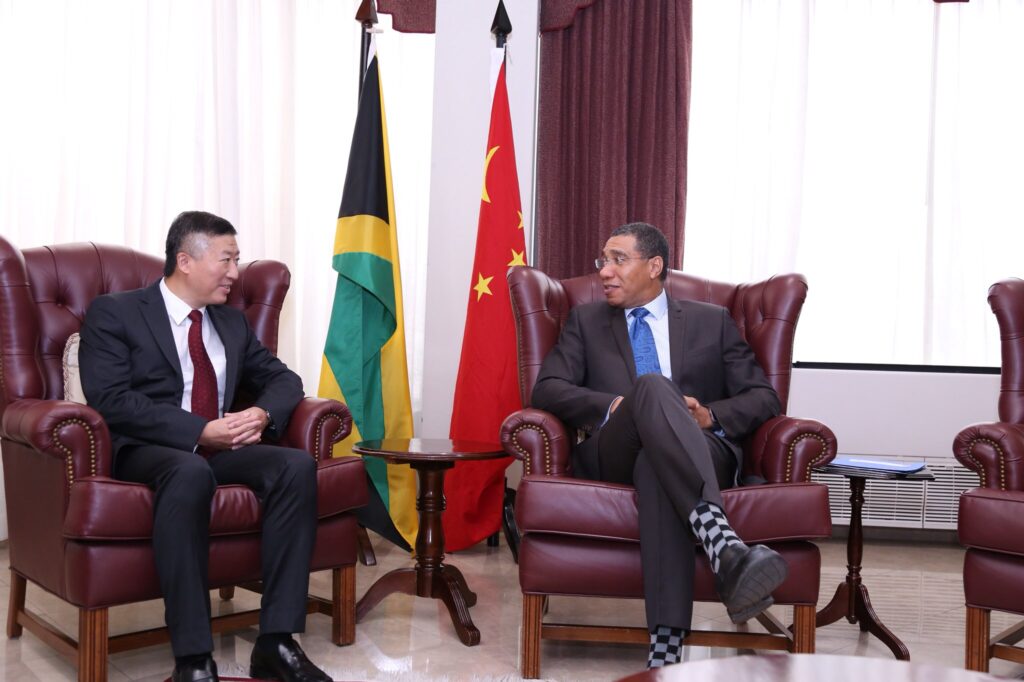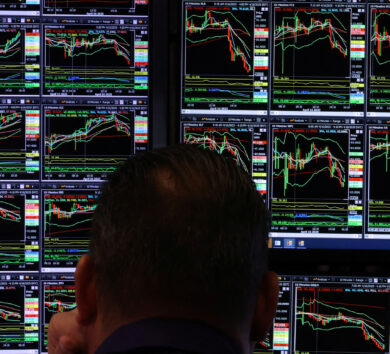

With the ever expanding partnership between China and Jamaica, Our Today recently discussed a number of issues related to Asian nation and its economy with Chinese Ambassador to Jamaica Tian Qi. Here we present Part I of that interview.
1. HOW DID CHINA’S ECONOMY PERFORM IN 2020?
Achievements and significance: China’s economy grew 2.3 per cent in 2020, exceeding the 100 trillion yuan (US15.42 trillion) threshold to 101.5986 trillion yuan, the only major global economy to have expanded last year.
This is the lowest annual growth since China’s reform and opening-up, and is also a remarkable achievement in the year when the COVID-19 pandemic was raging. It is worth noting that China attained the economic achievement while protecting its people’s health.
Contribution to growth of world economy: China has consolidated its position as a key driver of global growth, and the country’s economy is likely to keep acting as a “locomotive” that fuels the recovery of the global economy this year. China’s economy is injecting positive energy into the world, revitalising the confidence of the global community to recover economy.
2. WHAT LED TO THE ECONOMIC GROWTH OF CHINA IN 2020?
The V-shaped recovery from the biggest slump on record was engineered by getting COVID-19 under control and deploying fiscal and monetary stimulus to boost investment. Strict virus containment measures and emergency relief for businesses helped the economy recover. A combination of government-led investment and global demand for Chinese goods also helped to power a rapid recovery, and boost exports.
3. WHAT ARE THE POTENTIAL RISKS AGAINST CHINA’S ECONOMY, AND HOW DO YOU SEE THE PROSPECTS OF CHINA’S ECONOMY IN THE FUTURE?
Risks: There are still multiple uncertainties from changing epidemic situations and the external environment. China would take further measures to consolidate epidemic control and economic development results.
Prospects: China’s economy growth in the final three months of 2020 picked up to 6.5 per cent, showing the economy has almost normalised, back to pre-pandemic level. In the new year, China has both the foundation and conditions to maintain economic recovery, and is bound to make greater contribution to global economic recovery and development. By further enhancing innovation, expanding domestic demand and comprehensively implementing reform and opening up measures, it is injecting confidence into the international society for economic development. The Organization for Economic Cooperation and Development forecasted that China will contribute to over 1/3 of global growth this year.
Embarking on a new journey, China is accelerating the building of a new development paradigm, releasing market potential and opening wider to the world. It will definitely create more opportunities to share development with the rest of the world and strive for win-win cooperation.

4. HOW DO YOU SEE CHINA’S SOCIAL DEVELOPMENT?
As the epidemic has been largely brought under control domestically, factories and schools have reopened and tourist sites across the country have resumed their usual hustle and bustle.
China’s job market remained stable in 2020, with the surveyed unemployment rate in urban areas standing at 5.6 per cent, below the government’s annual target of around six per cent.
China is destined to continue its march in the fight against the epidemic in 2021. We have advanced and convenient detection methods and the vaccines have been administered to a large number of people. We have accumulated the experience of last year’s fight against the epidemic, and we believe this year’s fight will be more precise and effective, and the economy and people’s daily life will return to normal.
5. CAN YOU COMMENT ON CHINA’S FOREIGN TRADE IN 2020?
In 2020, China’s foreign trade of goods went up by 1.9 per cent from a year ago. Total volume of trade in goods is around US$5 trillion, with a four per cent increase in the 2.8 trillion of export, and 0.7 per cent decline in the 2.2 trillion of import. Trade surplus increased by 27.4 per cent. China is the only major economy that achieved positive growth in trade of goods in 2020.

6. WHAT IS YOUR PREDICTION FOR YOUR COUNTRY’S IMPORTS AND EXPORTS?
Import: Consumption spending accounted for 54.3 per cent of the country’s GDP last year, according to the National Bureau of Statistics (NBS). Data from the NBS showed that the country’s average disposable income posted a nominal rise of 4.7 per cent year-on-year in 2020 to 32,189 yuan (US$5,000). Consumers are expected to spend their excess savings this year. Domestic consumption would remain a key driver of China’s economic growth, which is expected to soar by 15-20 percent year-on-year in 2021. That means China will import much more in the coming years.
Export: This year, as the sporadic resurgence of coronavirus infection cases prompts more workers not to return to their hometowns and labour shortages are eased, the world will likely see Chinese factories heat up production, shipping everything from stay-at-home products, electronic components, toys and vaccines, to medical gear such as facial masks, which China had produced 40 units for every person around the world in 2020. We can expect China’s trade to bounce back more than 20 per cent in the first three months and jump by more than 10 per cent for the whole year.
7. WHAT WERE CHINA’S MAJOR CONTRIBUTIONS TO THE INTERNATIONAL COMMUNITY IN 2020?
Fighting the COVID-19 pandemic: China has walked the talk and devoted itself to the global fight against the once-in-a-century pandemic. Under immense pressure of epidemic prevention and control at home, China has offered urgently-needed supplies to others within its capacity.
So far, China has provided assistance to over 150 countries and 13 international organisations, and sent 36 medical expert teams to countries in need. China has provided countries around the world with over 200 billion face masks, two billion protective suits and 800 million testing kits. It has also been actively engaged in global cooperation on COVID-19 vaccines and working hard to promote these life-saving tools to be more accessible and affordable.
By working in solidarity with other countries amid the pandemic, the country has put into action its proposal and initiative of building a global community of health for all.
Besides its efforts and actions in the anti-COVID-19 fight, China has made remarkable contributions to global causes aimed at alleviating poverty, tackling climate change and resuscitating the global economy.
Alleviating poverty: China, the first country to bring the coronavirus outbreak under control, has made historic achievements in eradicating absolute poverty despite the impact of the pandemic, contributing to over 70 per cent of the global drive in this field. China has also continuously advanced South-South cooperation and made tangible contributions to poverty eradication and debt relief in the developing world.
Tackling climate change: Meanwhile, China has taken concrete actions to promote sustainable development, and stepped up its efforts in building a cleaner and better world. Notably, the country has announced its goal of striving to peak carbon dioxide emissions before 2030 and achieve carbon neutrality before 2060.
Resuscitating the global economy: Also, China has never stopped working to bolster economic globalisation, by following through on its fundamental policy of opening-up, which has created more cooperation opportunities for other countries and accelerated global recovery and growth.

Free trade: The year 2020 has also witnessed the continuous expansion of China’s “circle of friends” for free trade and the country’s consistent support for global multilateral trading system. Last year, the country signed the Regional Comprehensive Economic Partnership (RCEP) agreement with relevant parties, and completed investment agreement negotiations with the European Union (EU) as scheduled.
New development pattern: While speeding up economic development at home, China came up with the idea of establishing a new development pattern whereby domestic and foreign markets can boost each other, with the domestic market as the mainstay, trying to share its fruits of development with other countries and contribute to the steady growth of the world economy.
China hosted a series of important international trade events in 2020, including the 2020 China International Fair for Trade in Services, the 128th China Import and Export Fair, and the 3rd China International Import Expo, opening its door wider to the rest of the world.
Despite the recession, China’s foreign trade with countries along the Belt and Road totaled 9.37 trillion yuan (about US$1.5 trillion), up one per cent year on year.
Multilateralism: In this globalised era, stronger multilateralism is the way forward to tackle tough global challenges. In this context, China, in both words and deeds, has boosted confidence in upholding multilateralism and injected impetus into a joint response to global crises.
In the future, China will continue to take an active part in international cooperation on COVID-19, implement a win-win strategy of opening-up, promote sustainable development, advance science, technology and innovation, and promote a new type of international relations, and join forces with the international community to build an open, inclusive, clean and beautiful world that enjoys lasting peace, universal security and common prosperity.
Read Part II of Chinese Ambassador to Jamaica Tian Qi’s interview on Saturday (February 6)







Comments